- Written by NZ Fly Boy
- On Sep 27 2013,
- In Model Kit Tips & Techniques
How to Use an Airbrush – A Quick Lesson
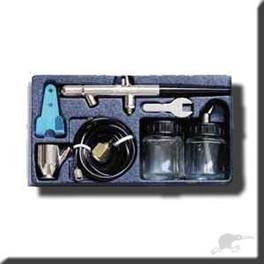
My First Airbrush
Firstly, I’m not even going to attempt to discuss the options available when purchasing an airbrush.
I just bought a cheap airbrush from a no name brand off TradeMe our local auction site.
Everyone has their own preference but if you’re in the process of deciding, get a double-action brush – it’s a must if you want to be able to quickly make adjustments to the type of spray as you work, it gives an interactive tangible feel that can really improve your results.
Even after reading pages of airbrush information on the Internet – with all the warnings on how easy it is for the airbrush beginner to get discouraged – the first days were really, really frustrating. Having read the instruction sheet & watched the video a few times, I thought things looked straight forward enough – but like most things in life, theory and practice are all too different.
The main issue is the number of variables that come into play when attempting to set up your brush. These variables can be classified into 3 groups:
- Paint consistency
- Air Pressure (PSI)
- Distance of Nozzle from the spraying surface.
This in itself does seem pretty straight forward – but it’s the balance of these elements relative to your requirements that can be difficult to master. The degree that each of these variables can be adjusted means that there’s not much between getting it right, and getting it wrong – hence defining the set-up for the novice difficult.
What I’ll try to do for you now is document how I personally got from complete novice to successfully completing my first spray-painted model – it may not be expert advice, just how I got the confidence to start working on a model.
I’ll assume that the equipment is working OK and you’ve got to the stage of spraying water based paint onto a scrap of plasticard or old model. Make sure you understand how to correctly setup your brush. For example, with the Aztec brand of airbrushes, if you don’t have the nozzle tightened enough, it affects the airflow and results in a poor spray quality.
The Airbrush Virgin’s Guide
Rather than trying to explain the theoretical properties of the various combinations – what in my opinion makes the learning process so hard – I’ll show the consequences of getting these combinations wrong. This may give the beginner a better understanding of how these various elements can affect the results you get.
I think it’s easier to display the effects of an incorrectly setup brush, and work back to the cause – this will allow you to take the necessary steps to avoid problems.
Its important to mention the consistency of the paint. I don’t think others indicate how vital it is to develop an understanding of the paint you are using. Getting the same consistency each time is difficult to achieve – but knowing when to compensate to avoid poor results is important. People tend to forget that the paint is the key ingredient in airbrushing, hence requires the most attention. Pressure and proximity are key elements in their own right, but they act on the paint – not the other way around.
 Too close
Too close
This effect (normally called spidering) is caused when either the paint is too thin and/or the airbrush is held too close to the model. To correct it – move the airbrush away from the surface of the model. But, if you need to keep a fine line, reduce the pressure on your compressor. Alternatively, you could thicken the paint slightly if you want to keep using the same air pressure.
 Paint too Thick
Paint too Thick
This is normally caused by low air pressure from compressor. But again, you could argue that its a consistency issue, with the paint being too thick, and the low pressure being insufficient to atomise the paint.
To solve this problem; thin the paint and/or increase air pressure.
 Paint Too Thin
Paint Too Thin
You get this result if the paint consistency is too thin. To fix it, add more paint and/or decrease the air pressure. These problems seem to be magnified when working on hard plastic surfaces. I didn’t have any spare models lying around to practice – but any old plastic container will do.
To Sum Up:
If you find that you are unhappy with the quality or definition of the edge of your spray line – the chances are that the paint is too thick. You need to thin it down and back off on the air pressure. Most describe a milk-like consistency. Well, this is normally hard to visualise inside a cup of mixing container – quite often you can go quite thin. Remember, if the paint can’t atomise the paint well, its going leave the nozzle too thick, and not in the fine mist needed for smooth edges. Backing off on the pressure also reduces the speed and volume of paint delivered to the nozzle – this means that you don’t have to work as fast, and that you can work closer to the surface – hence allowing finer lines.
I know it’s taking the easy way out, but I’d suggest working on a 1/24th scale kit (I did a Spitfire MkVc). Working with the larger scale really does allow the beginner a margin of error that you simply won’t get with a smaller model. For example, when I sprayed the camouflaging lines, there was too much overspray at the edges – but by working at a larger scale, I could fit a smaller nozzle, and redefine the edges. If you prefer, work on a scrapped model first, you can still go ahead and get a larger scale model when you get the confidence.
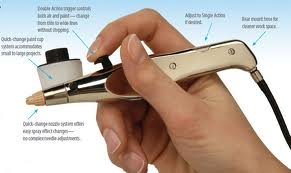
My Current Airbrush
Having worked on a number of models larger than 1/35th, I have to say, I find quite a difference on how you handle the airbrush. With 1/72nd you have to work more instinctively – there’s less time to build effects up compared with 1/32nd or 1/24th. An airbrush really does come into its own at these scales.
No doubt in time, I may evolve my skills to work in the smaller scales – but I’m starting to develop a strong preference for large kits. Of course this has a number of draw-backs – price & range to name but two. But in terms of the finished article, frankly 1/72nd kits just don’t have the same presence.
Back to the airbrush, using double action will allow you to adjust the response of the brush on-the-fly. Backing off on the amount of paint delivered to the nozzle is crucial to adjusting the spray pattern.
You really have to keep faith – it just seems to fall together – you just need to be patient. I’m a long way from being expert – but went from despair to reasonably confident once I acquired the essence of controlling the set-up. Sorry I can’t be more specific – but it really is a state of mind more than anything.
That’s all for now, happy modeling and good luck with your new airbrushing!
Cheers
NZFlyBoy
by NZ Fly Boy
Avid WW2 aviation enthusiast and modeller. Been making model kits since age nine and I now model mostly ww2 model airplanes. (my wife is an understanding one!)
Categories
- Airfix Model Airplane Kits
- Airplane History & Use
- Build Reviews
- Dragon Master Kit 1-48 Fw1908A-8
- Featured
- Hasegawa Model Airplane Kits
- Heller Model Airplane Kits
- ICM Model Airplane Kits
- Italeri Model Airplane Kits
- Kiwi Wings Model Airplane Kits
- Model Kit Tips & Techniques
- Revell Model Airplane Kits
- Signifer Model Airplanes
- WW2 Model Airplane Kits
Recent Posts
-
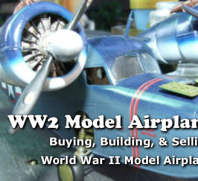
Welcome to WW2 Model Airplane Kits
Mar, 15, 2009
-
Dragon Master Kit 1-48 Fw190A-8 with Owl Res...
Jan, 12, 2017
-
Revell-Matchbox 1:32 Sea Venom Vampire NF: C...
Dec, 31, 2016
-
Revell-Matchbox 1:32 Sea Venom Vampire NF: F...
Dec, 31, 2016
-
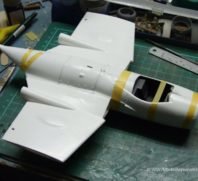
Revell-Matchbox 1:32 Sea Venom Vampire NF Fu...
Dec, 31, 2016
-
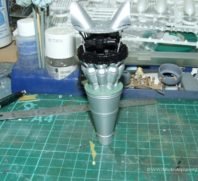
Revell-Matchbox 1:32 Sea Venom Vampire NF Bu...
Dec, 31, 2016
-
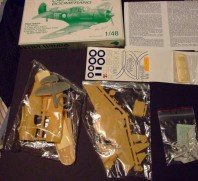
Kiwi Wings 1/48 CA-12 Boomerang
Feb, 14, 2015
-

Heller Kits – Aren’t They All Ai...
Dec, 12, 2013
-
Hasegawa 1:72 Kawanishi H6K5 Mavis Progress
Nov, 26, 2013
-
Hasegawa Kawanishi H6K5 is a BIG kit!
Nov, 06, 2013
-
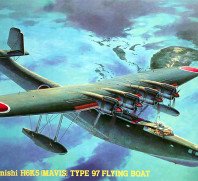
Hasegawa 1:72 Kawanishi H6K5 Mavis
Oct, 17, 2013













Leave a Comment